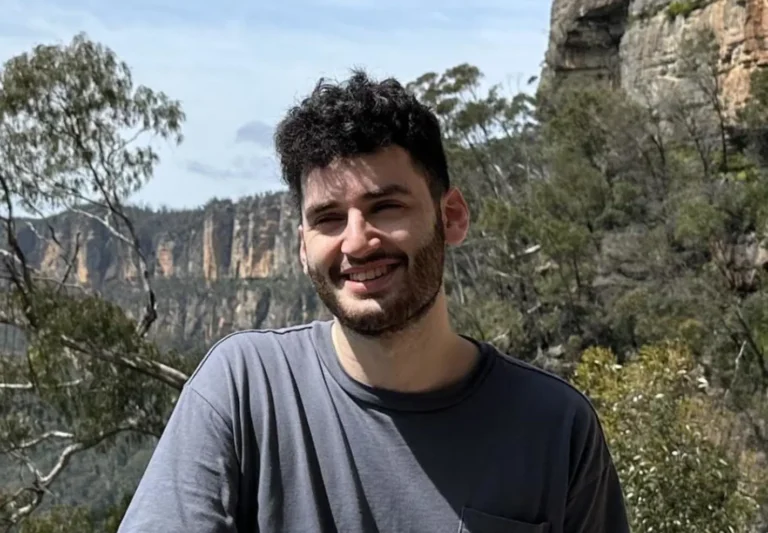
Working with the old rabbit trapper

Sydneysider: A personal journey
In my youth, the feral rabbit was Australia’s most ubiquitous wild animal. Thirty years ago, it was still easy to see them in Sydney. There were small populations all over the place. There were warrens in Centennial Park, along Cooks River and even in the barren clifftop parks overlooking the ocean in the eastern suburbs; in fact, virtually anywhere where there was still an old paddock and a bit of scrub.
Now, you can drive from one end of Australia to the other and you’ll be lucky to see a single rabbit. On a recent touring holiday through northern NSW I saw only a couple. In the 1960s, you couldn’t have driven even five kilometres in the early morning without spotting a few, and roadkilled carcasses abounded.
The European rabbit was deliberately introduced to the wild in Victoria in the 1850. By the 1920s, there were an estimated 10 billion of them, reproducing at a rate of 18 to 30 per female rabbit per year and spreading over 100 kilometres a year. After devastating two million acres of Victoria, they crossed New South Wales, South Australia and Queensland. By 1890 they’d reached Western Australia. It’s often reckoned to be the world’s worst example of unintended consequences. The infestation was only wound back after the introduction of the myxomatosis virus in the 1950s and the more recent calicivirus.
Of the many methods of rabbit control invented, trapping was surely one of the least effective and the most brutal. I know, I saw it at first hand: in the late 1950s, when I was about 10 or 11 I spent a couple of days working with an old rabbit trapper.
My father and I sometimes drove up to stay at his friend Stan Neville’s property, ‘Rossmoyne’, north-west of Mudgee. Once, while we were there, Stan had arranged for a trapping contractor to thin-out the population on his farm, and, to experience rural problems, I was despatched to work with him.
I was already a keen little shooter and had shot quite a few rabbits with Dad’s little .22 Browning automatic rifle. Trust me, shooting is quick and clean, trapping is horrible.
The trapper was an old bloke, it seemed to me, but he was probably about 55 or 60. He was dressed in hand-me-downs and drove an ancient car. On the first day we went out to set the traps. The country was too rough to drive everywhere so we had to walk a lot, me lugging an old wheat sack full of steel traps.
The trapper used a small hand tool called a rabbit trapper’s hoe. On one side of the wooden shaft was a hammer head and the other a small hoe blade a few centimetres across. To lay the trap he dug a shallow depression the size of the trap and maybe 40 centimetres deep. The trap was laid in the depression so the top was level with the ground. To each trap was attached a short length of chain and a steel stake that was driven into the ground. The trapper compressed the u-shaped arm of the trap – which acted as its spring – by pressing down on it with his foot. The jaws of the trap dropped open and the pressure plate that triggered the trap fell into position and locked. It only took the slight weight of a rabbit’s foot bearing down on the plate to snap the terrible jaws closed.
The trap had to be concealed. The trapper had a wad of rectangles of newspaper, maybe ten by 13 centimetres, attached to the lapel of his old sports coat with a big safety pin. He’d pull off one of these and lay it gently over the pressure plate and the trigger mechanism because dirt or a small stone could foul the crude device. Then he scraped loose earth back around the trap and finally sprinkled a couple of handfuls of fine soil over the newspaper. I think he always left the top of the steel peg and the chain visible, so he’d be able to find it again.
We set the traps just at the entrance to burrows. But there was another trick he showed me. Near each warren there was a small mound of earth on which the buck rabbit urinated to proclaim his territory. The trapper sometimes scooped up a little of the wet soil with the hoe and sprinkled it on the trap to attract the buck.
The next morning we set out at first light to clear the traps. Not all the traps had made a catch, but as we came to those that had (it was probably at least half of them), we could see the poor rabbit, its leg smashed by the jaws of the trap, struggling to escape. Some had got down the burrow and had to be dragged out by the chain. They screamed – it was like a high-pitched whistle – until the trapper mercifully killed them by grasping their ears, lifting them to about shoulder height and flicking their body down in a motion which broke their neck.
The old bloke could see that I was quite disturbed by all this. When we sat down for a rest, he told me he didn’t much like it either. “But it’s all I know how to do,” he said. “It’s the only job I’ve had since the Depression. I felt very sorry for him.









